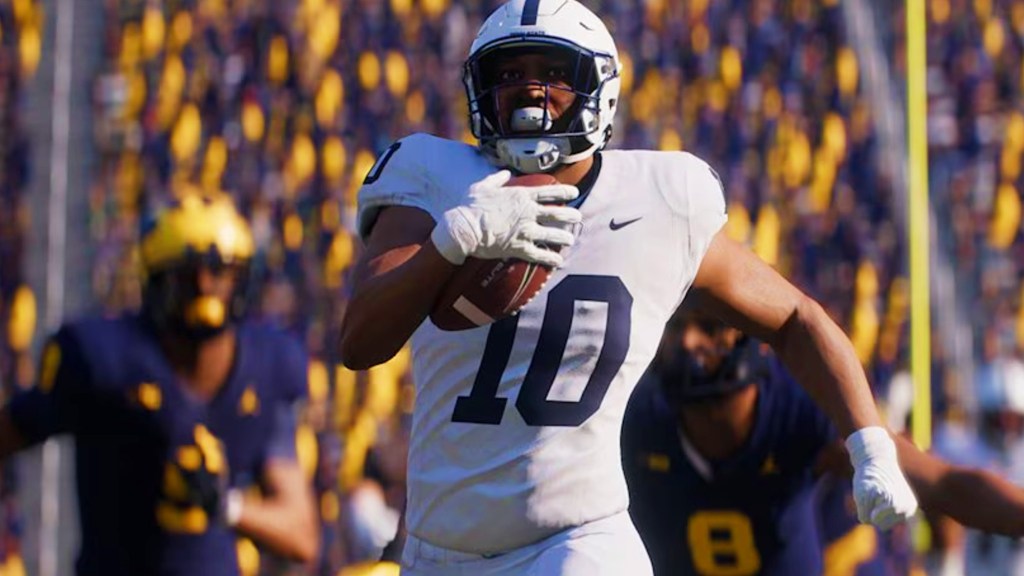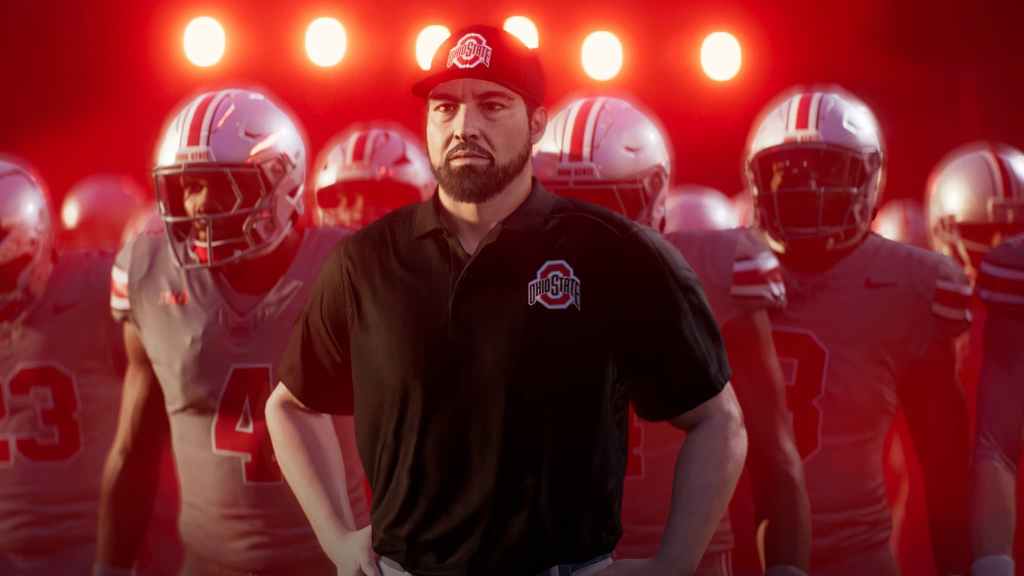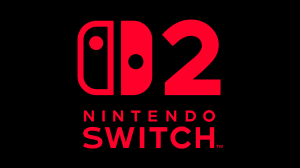Heading into the 2010 season, Michigan Wolverine fans were rabid for information about who was going to be their starting quarterback. Sophomore Denard “Shoelace” Robinson had impressed during his freshman season in limited time, but head coach Rich Rodriguez refused to name a starter. Ultimately, Robinson got the nod and had one of the greatest starts to a college football season in history, racking up multiple 500-yard games while showing equal skill as a passer and rusher. He looked like a shoo-in for the Heisman, but Shoelace’s shoes fell off in the middle of the season, leaving Wolverines’ fans stunned at how quickly things turned. That said, when I look back at that season, all I remember are the good times, even if Robinson ultimately didn’t have what it took for an all-time season.
Videos by ComicBook.com
While playing EA Sports College Football 26, I thought about that 2010 season a lot. Similar to Robinson, CFB 26 is one of the best in its field, blowing most of the competition out of the water. However, I can’t help but feel like the more I play it, the more small issues continue to crop up, marring what should be a Heisman-trophy-winning season.

Let me be clear: College Football 26 is a big step up from CFB 25. The team at EA Sports has made so many smart choices across nearly every mode, really drilling into exactly what players want from a quality-of-life standpoint. That said, there’s still plenty of room for improvement. Things EA can tune and tweak through patches or future versions of the game that could make College Football the premier sports game for modern fans.
The most important aspect of any sports game is the on-field gameplay. If you liked College Football 25, you’re going to love CFB 26. It doesn’t do too much to reinvent the game, though there are a few things I noticed during my time that left me impressed. The most notable change is the addition of in-game subbing. You don’t have to leave the game to switch players in and out. In CFB 26, you can make lineup changes at the touch of a button, keeping you on the field much longer.
That sounds like a small change, but it makes CFB 26 feel more dynamic. You’re doing everything on the fly, which adds pressure to decision-making. Do you take the time to sub in your fastest wideout for this screen play? Or do you leave the slower WR in and make sure your protection is squared away? Good players will be able to do both, but it’s another aspect of gameplay you’ll need to master, especially if you’re playing with an accelerated clock.

I’ve also noticed fewer instances of defensive players having eyes in the back of their heads. Don’t get me wrong, I’ve still seen a few very questionable interceptions, but the “see ball, play ball” mantra the team has been touting this year is mostly true. Defenders usually need to turn their heads around to have a chance to make a play. It’s not perfect, but it’s close.
Speaking of not perfect, blocking remains an issue. In my experience, offensive linemen seem much more likely to follow blocking progressions you’d expect, but never rely on a skill position player to even attempt to make a block. It’s getting to be silly how often wideouts run away from contact, even on designated run plays. Look, I get these guys are Lamborghinis, not F-150s, but they could at least try to act like they’re doing something.
That said, running does continue to feel great. When you put a foot in the ground and turn upfield, you can feel that plant foot’s power as you shift directions. It’s not always easy to break big runs given how adverse most wideouts are to contact, but when you do, there’s nothing like it.
The place CFB 26 really shines is in all the updates the team has made to the various modes. I’m not going to run through the whole list of off-field changes, but here are a few that really stood out to me. Dynasty players will love being able to see their team’s needs directly from the Recruiting screen. Knowing exactly what players to target makes recruiting so much easier. EA has also done some retooling of visits and hard sells, introducing some extra strategy when you use both methods of recruiting.
Having the real-life versions of most coaches (we have to get Coach Prime next year) is more of a game-changer than I expected. Seeing real-life coaches’ signatures on my offer letter in Road to Glory is a great touch, and the expanded coach customization makes Dynasty mode even more of an RPG-like dream.

Speaking of Road to Glory, I loved the high school experience. I think some will balk at having to play through moments, but I found it to be just enough of a high school experience for what I’m looking for. Managing your board of offers could use some sprucing up, but it’s not a bad first effort.
I will say that some of the RTG conversation options hit a little too close to home. After being rejected for prom in high school and then ghosted by the first girl who talked to me in college, it felt like EA had gone through and read my Facebook page from 2008. I’d like to see those conversations expanded into something with a bit more meat on the bones, but I always liked seeing them pop up, especially when CFB 26 subtly roasted me with the outcomes.
It’s not all clear skies in Dynasty and RTG. The sim engine could still use some work. I’ve only played through a total of six seasons so far between the two modes, so I’ve seen a limited scope. However, even what I have seen has been a little wacky. In my first RTG save, Ohio State wide receiver Jeremiah Smith caught 156 passes for 2,235 yards and 25 TDs. He’s a good player, but that’s 200 yards clear of the current receiving record and blows DeVonta Smith’s 2020 Heisman-winning season out of the water.

That was far from the only weird thing. When simming an Oklahoma State game against an FCS opponent in Dynasty, the Pokes lost 6-3. I know my alma mater was bad last season, but even in their worst year in a decade, they beat the defending FCS champs 44-20. Those weird results don’t happen as often as they did in CFB 25, but they’re still there.
Dynasty Mode’s transfer portal could also probably use some tweaking. EA wanted to make it as lively as the real-life version, but it seems like nearly everybody wants to transfer this year. You might have a star QB who played plenty and looks ready to be even better. Despite your best efforts, they will leave at the drop of a hat. That does mean you can reload more easily, but it feels like EA needs to reel that in slightly.
The culprit here seems to be an over-tuning of the new dynamic Dealbreakers. Last year, these were relatively static and easy to maintain. With CFB 26, the team wanted it to be more of a challenge. So that top-rated QB I mentioned earlier likely left because you tried to recruit the signal caller of the future. At least in CFB 26, kids these days are a little overly sensitive and don’t want any competition. It stinks, but it’s fixable.
That’s largely true of every issue I have with EA Sports College Football 26. There’s nothing particularly glaring about the game, but it does have a few blemishes. It is undoubtedly a step up from CFB 25 and a must-play game for college football fans, for no other reason than hearing “Enter Sandman” blast through your speakers at a night game against Virginia Tech is essentially a religious experience.
Score: 4.5/5








